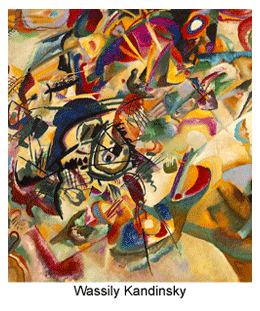- Prelude
- Editorial
- ...Where ever I stumble, let painting lie before me....
- ...Colour guides in its own direction...
- Abstract Art: Popular Myths and History
- Abstract Rhetoric:
- Ram Kumar: A transition from figurative to abstract
- I walk the line
- Exploring a twilight zone
- Articulating the Abstract voice from Madhya Pradesh
- Perception of Abstract in forms
- Confronting Cultures: The Dialectic of Abstraction in Bengal Art
- K.C.S. Paniker and his Words and Symbols
- Dialectics of Abstract Art and Its Indigenous Identity
- Between Ambivalence and Criticism: Why Abstraction?
- Notations and Rhythm in Space: Sushen Ghosh
- Victorian Era: Eclectic Furniture
- Patek Philippe : an overview
- The “Theme Pandals” of Durga Pujo: An Unexplored Discourse
- Musings on Music
- Butterflies in the stomach… still
- Contemporary Art Market Report 2009-10
- Artist Index and Statistics
- Auction Reports
- Recent works of Pavan kumar D. - In the Journey of Learning things
- Narrating “with a pinch of salt” Paintings of K.P.Reji
- Reclaiming an artist of true calibre
- Musings from Chennai
- An Annual Homage..
- Art Events Kolkata: September-October 2010
- Mumbai Art Sighting
- Art Bengaluru
- Unveiling the next in line
- Preview
- In the News
- Sotheby’s : Important Watches Hong Kong
ART news & views
Prelude
Volume: 3 Issue No: 10 Month: 11 Year: 2010
Celebrating 100 years of Abstract Art
"Of all the arts or paintings, abstract painting is the most difficult. It demands that you know how to draw well, that you have a heightened sensitivity for composition and for colours, and that you be a true poet.  This last is essential." - Wassily Kandinsky
This last is essential." - Wassily Kandinsky
At the turn of the last century, French artist Cézanne had come to the conclusion that the way we see the world, that is reality, actually lies in the eyes of the beholder, meaning that the reality is different for everyone. According to him, seeing itself was a creative process.
With this seemingly simple theory he opened up a whole new approach for artists. Fired up by this newly discovered freedom of expression, Gauguin, Matisse and Picasso followed his example of experimentation, looking at the art of other cultures to come up with new ways of communicating their ideas. A hundred years ago, Picasso shocked the Western world with “Les Demoiselles d'Avginon”, a painting that broke all accepted rules, which was clearly inspired by the tradition of African masks.
Frankly speaking, native cultures have always produced art containing abstract elements, but today's perception of abstract art dates back to 1910, when Picasso and Georges Braque invented cubism, which within half a decade, led to the pure abstract art created by Piet Mondrian and Russian styles such as constructivism and suprematism.. In cubism, for the first time in art history, artists began to paint abstract art as a result of a deliberate artistic and philosophical development. Together with Braque, Picasso thus developed cubism, which demonstrated how independent art was from nature.
Also inspired by Cézanne, Russian artist Kandinsky declared in 1910 that the real nature of painting was dynamic brushstrokes of expressive colours on a flat surface. Kandinsky was the first to develop fully abstract painting.
Into the 21st century, abstraction is exemplified in the works by Barnett Newman, John McLaughlin and Agnes Martin as well as younger living artists. And it has assumed so many forms like Digital art, Computer art, Internet art, Hard-edge painting and so many others.
And the market for this field has been picking up over the last couple of years, both in India and abroad.
Though the number of abstract artists in India is still very limited, the best thing is that they have enjoyed exclusivity, both nationally and internationally. Indian 'abstractionists' would include Gaitonde, K.C.S. Paniker, Swaminathan, Raza, Ramkumar, Prabhakar Kolte, Ganesh Haloi, Achuthan Kundallur followed by Akhilesh, Yogendra Tripathi, Sunil De, Amitava Dhar, Samindranath Majumdar and Manish Pushkale.
Thus, on the cusp of a century, abstract art continues to show its potential reason enough for Art news & views to dedicate a whole issue to it.